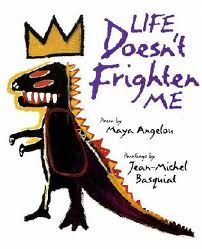You are looking for an article that is at least 5-6 paragraphs long that presents an idea that you can analyze and think deeply about. Doing this assignment well requires finding an interesting article! Take the time to do that! Ask your family what kind of online news sources they read. Great resources for this response are:
The New York Times' Upfront Magazine (There are also copies in the classroom)
USA Today's Opinion Section
The Daily News' Opinion Section
The New York Times
You should use the same techniques for reading non-fiction that we have been working on in class. Think about the main ideas (the explicit, or, what the author wants you to know) and what the author wants you to feel or think (the implicit, subtle ideas) and how the author achieves this (what intentional craft moves did he/she use?) Your response will be structured like your non-fiction summaries, with an added third part - YOUR OWN OPINION. Each paragraph MUST be 5-7 sentences long. You must formally cite where your article came from (page R-3 in your agenda or noodle tools at ms51library.org) and provide a link if possible. Here is an overview of the structure:
Part 1: a summary that includes what the author wants you to know?
Part 2: an analysis of what the author wants you to feel and think and HOW the author achieved it (statistics, an appeal to emotion, loaded words, perspectives that are present or missing, etc.)
Part 3: your personal response to the article: formulate your own opinion on the ideas and issues presented in the text.
*******************************************************************
Here is a writing guide with questions to help you get started. This is a review from what we did during the first unit. Revisit your notes!
For Part 1 of a Nonfiction Blog Post, answer these questions:
1. What is the overall main idea of the text (remember, you found this by looking at the main who+what of each paragraph)? What is the entire text mostly about? Include 3-4 details and try to directly quote at least one.
For Part 2 of a Nonfiction Blog Post, answer these questions:
1. What does the author want readers to think or feel?
2.. What are some craft moves the author uses to achieve this? How do they work? Try to include at least one direct quote here.
For Part 3 of a Nonfiction Blog Post, write your personal response, using these as sample questions:
1. What will you take away from it?
2. How has your thinking been shaped or changed, and why?
3. Do you have an opinion on the issue now?
3 4. Is there anything else you want to know?
Use the Non-fiction Blog Response Student Checklist in order to help you prepare for and write your posts!
